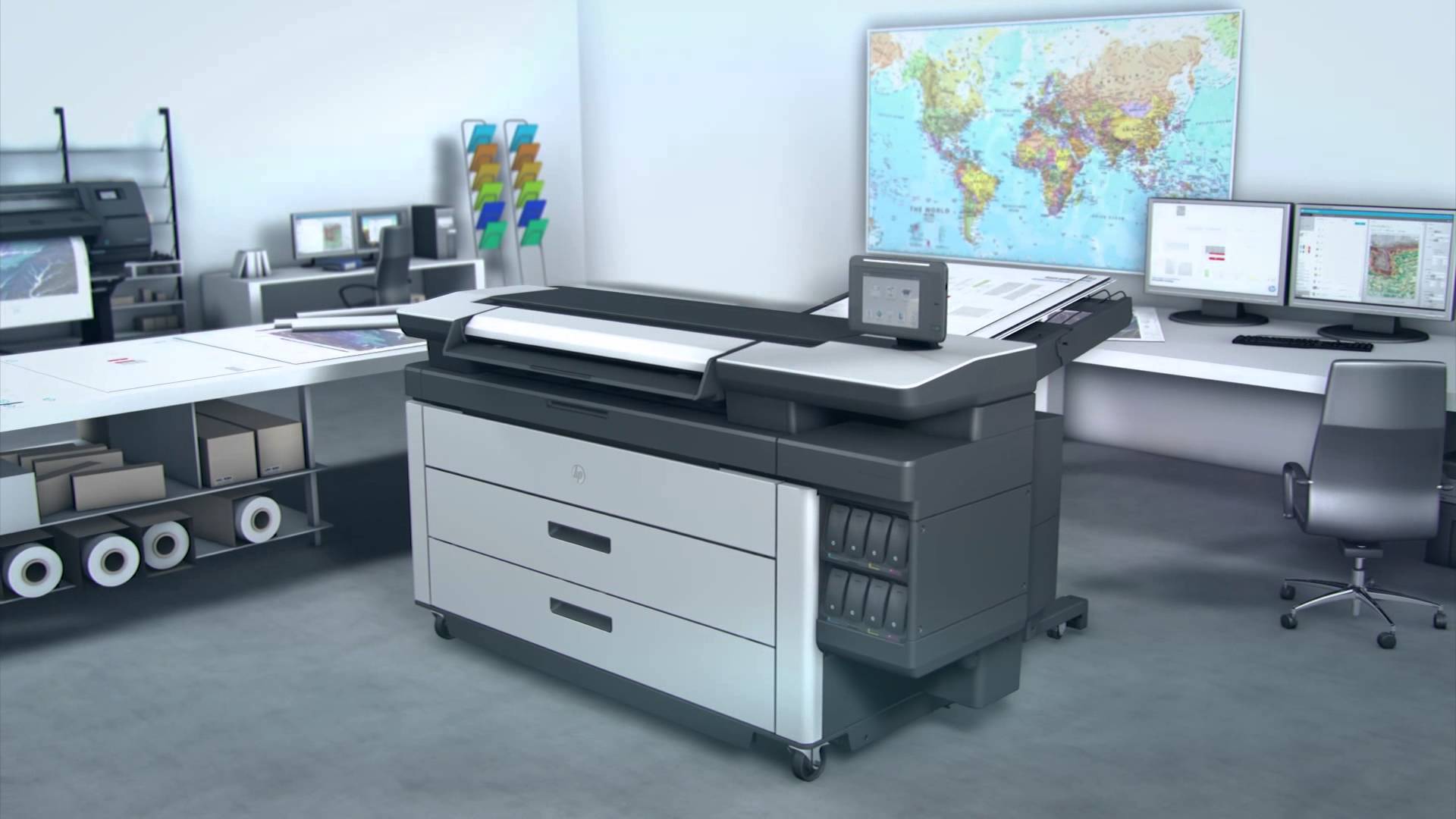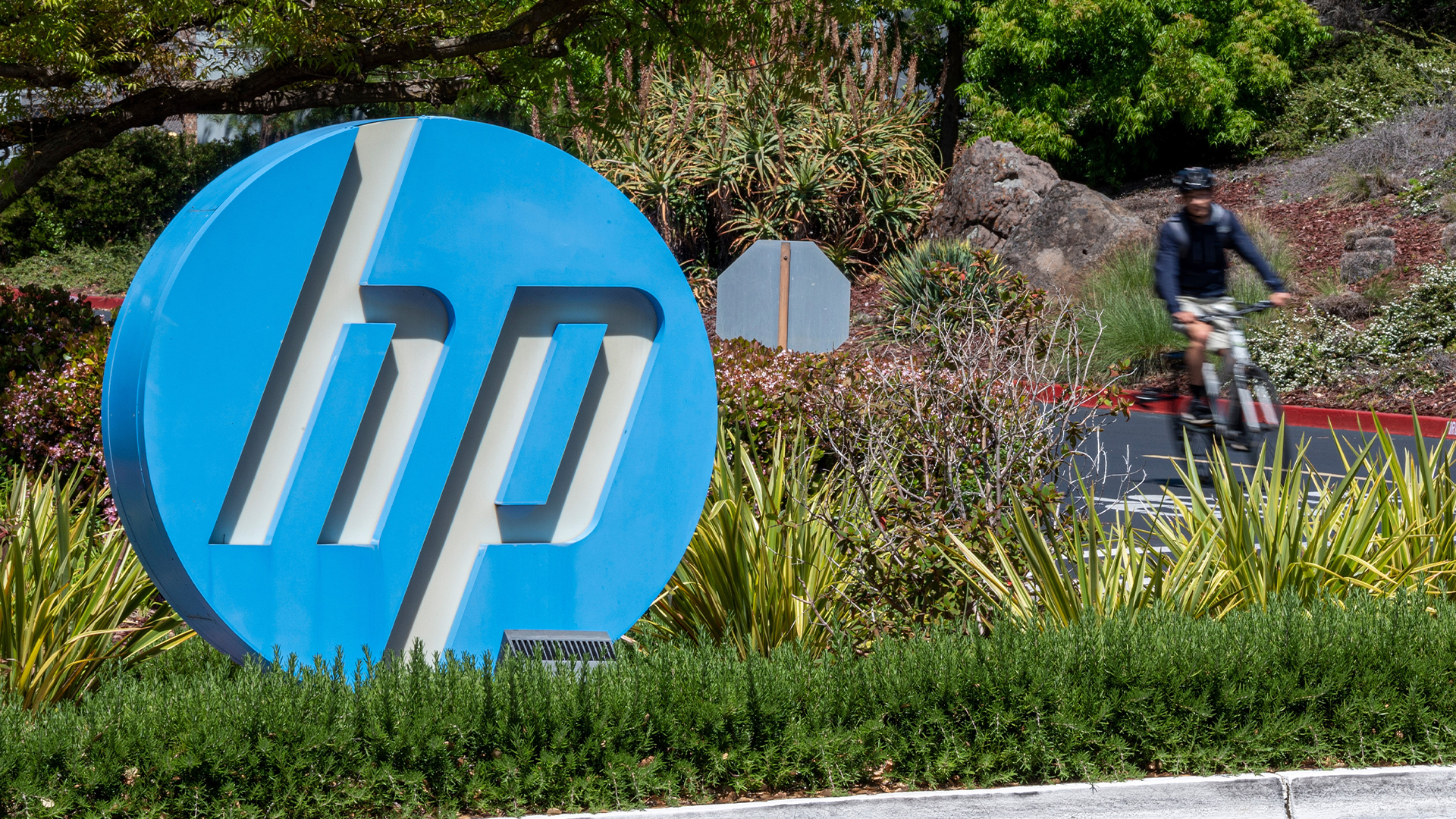The breadth of PageWide printing
HP PageWide technology is far more than an office printing solution.

The biggest development in Inkjet printing in well over a decade, HP's PageWide technology is already revolutionising the office printer. With incredible accuracy, high speeds, low-printing costs and superb reliability, HP's PageWide printers are already setting new benchmarks for office inkjets, while giving serious competition to many office lasers. Yet HP is only just getting started. As a technology that has its roots in commercial presses, PageWide can scale upwards and downwards to power everything from A4 desktop printers to large-format plotters and a new generation of high-speed Web presses. What's more, it's a technology that can handle the heaviest workloads, already honed and proven through billions of printed pages. In every industry it touches, PageWide is a force to be reckoned with.
The PageWide Difference
In a conventional colour inkjet printer, each sheet of paper moves vertically through the paper transport mechanism, pausing briefly so that a moving print head can travel horizontally across the surface, its thousands of tiny ink nozzles depositing a band of cyan, magenta, yellow and black ink. A PageWide printer does things differently, using an array of printheads spanning the width of the page. Each head in the array contains thousands of nozzles for each of the four ink colours, and the result is that each band of ink can be deposited in one burst while the paper moves at higher speeds underneath. Working with an equally precise paper transport mechanism, controlling the motion of the paper with incredible accuracy, PageWide printheads deliver a revolutionary combination of precision, quality and performance.
It's this that enables the latest PageWide office printers to reach speeds of up to 70 pages per minute, while still printing professional-quality text and images at resolutions of 2400 x 1200dpi. What's more, as the printheads are built to account for potential issues like clogged nozzles, you get business grade reliability to boot.
Scaling Up
Yet there's more to PageWide than office printing. The great thing about this technology is that it's modular. The printhead used in PageWide office printers is 8.57 inches wide, but to broaden the scope of the technology HP has developed a new 5.08in PageWide printhead with a new S shape, making it easy to stack larger arrays of printheads horizontally. This enables HP to build arrays measuring 20, 40 or even 60-inches wide. In theory, they could be as wide as you can imagine.
With no need to factor in the motion of a moving printhead or worry about wear and tear on the mechanism, the biggest limitations become controlling so many thousands of nozzles and ensuring that the paper transport mechanism can handle the media while constraining lateral movement. For a company with innovation in its DNA, these are challenges, not problems. It's no surprise, then, that PageWide is expanding to conquer new territories.
Right now, that means products with the potential to revolutionise the large-format printer and plotter markets. HP's new PageWide XL printers are the fastest large-format production printers currently available, working at speeds of up to 30 D/A1 prints or posters per minute. They can beat current LED printers on raw performance, while delivering mixed monochrome and colour pages - an impossibility for the monochrome-only LEDs. They're also up to 50% faster than conventional large-format inkjets and plotters, and with an ultra-fast processor and PDF management built-in they can be 50% faster to start printing. Meanwhile, the 1200 x 1200dpi resolution and HP PageWide XL pigment inks ensure crisp lines, fine detail, smooth greyscale gradations and rich, vibrant colours, all on smudge-resistant, durable prints.
To make this work, HP has taken its PageWide technology and developed a 40in print array with more than 200,000 ink nozzles stretching across the A1 page. The ink cartridges have the capacity to last for between four and six rolls of paper, covering the printer for high volume printjobs. Plus, with HP's SmartStream software, the whole process is optimised to get you printing faster and save you time when it comes to collating the output. Whether you're printing small numbers of high coverage documents or medium to high coverage documents in quantity, the PageWide printhead and the SmartStream software can get superb results faster, and at lower costs than conventional inkjets and plotters.
Why is this so revolutionary? Because there's no need to make trade-offs between operating costs, quality, print speeds and colour capabilities; PageWide XL printers can balance them all. Architects, engineers and other construction professionals can have colour in their documents and diagrams, making them clearer and easier to read, without facing long waits or unnecessary costs. Design firms and small to medium repro firms can produce the large format prints they need to tighter deadlines while reducing overheads. Maps and point-of-sale posters can be produced at breakneck speeds, on demand. In an era where every business values efficiency and agility, PageWide XL printers deliver on both counts.
The PageWide Press
And PageWide isn't finished there. This technology began with commercial print before HP shrunk it down for office printing, and now things have come full-circle. HP's latest range of PageWide Web Presses is already making waves in the commercial print market, with HP's new High Definition Nozzle Architecture allowing for high-speed 1200dpi colour printing from a PageWide print head with 2,400 nozzles per inch. This doesn't just allow for pages with smoother transitions, enhanced shadow detail and more even colours, but a dramatic increase in performance, enabling the new generation of PageWide Web Presses to reach speeds of up to 244 metres per minute in full colour.
This story isn't just about speed and print quality, though. In today's commercial printing market flexibility is crucial, and PageWide technology gives you more. With PageWide, it no longer matters if you want to print one book or 2,000 books, or even if you need to print the one book straight after the 2,000. The technology and processes accommodate rapid, seamless switching. Combine this with new workflows and the whole way commercial printing works changes. It becomes easier to do local or regional editions of magazines, or do targeted or personalised versions of a journal. Smaller print runs become more commercially viable, as do manuals or guides that target more specific products or markets. PageWide removes nearly all restrictions.
Of course, raw performance helps. A PageWide Web Press can give printers working in the financial or business sectors the performance they need to print millions of pages and get them to their customers the next day, on deadline. When the City or Wall Street can't wait, HP Web Presses ensure that they don't have to. Meanwhile, one of the biggest overheads in publishing the need to overprint to ensure supply becomes unnecessary. Instead of printing too many copies and leaving them sitting, unwanted on a warehouse shelf, publishers can order smaller runs as and when they're required. In short, PageWide Web Presses take us one step closer to large-scale printing on demand.
New Frontiers
PageWide is shifting into new devices and new markets, but that doesn't mean its journey ends there. Over the next few years we can expect PageWide technology in other forms, covering everything from desktop models to huge commercial presses, with potential applications in the new world of 3D printing. Faster speeds, lower costs, higher quality and improved reliability, whatever the device, whatever the market: the whole PageWide ecosystem will grow to meet it.
Sign up today and you will receive a free copy of our Future Focus 2025 report - the leading guidance on AI, cybersecurity and other IT challenges as per 700+ senior executives
ITPro is a global business technology website providing the latest news, analysis, and business insight for IT decision-makers. Whether it's cyber security, cloud computing, IT infrastructure, or business strategy, we aim to equip leaders with the data they need to make informed IT investments.
For regular updates delivered to your inbox and social feeds, be sure to sign up to our daily newsletter and follow on us LinkedIn and Twitter.
-
 The UK AI revolution: navigating the future of the intelligent enterprise
The UK AI revolution: navigating the future of the intelligent enterpriseAs AI reshapes industries and societies, decision-makers in the UK face a critical choice: build a sovereign future or merely import it.
-
 Turning the UK AI revolution into a sovereign reality
Turning the UK AI revolution into a sovereign realityThe UK AI Revolution documentary series posed difficult questions about AI’s hype, control, and future. Now, IT leaders must find the architectural answers
-
 HP ProBook 4 G1a review: A no-frills business machine for the average office
HP ProBook 4 G1a review: A no-frills business machine for the average officeReviews A serious but dull business laptop, however, HP's ProBook 4 is a decent middle-tier machine
-
 The HP ZBook Ultra G1a offers truly impressive levels of performance – a genuine game-changer
The HP ZBook Ultra G1a offers truly impressive levels of performance – a genuine game-changerReviews AMD's new Ryzen AI Max+ 395 redefines what we can expect from a laptop chipset with an integrated GPU and delivers outstanding performance
-
 The HP ZBook X G1i is a full-throttle juggernaut – you couldn't ask for much more from a workstation
The HP ZBook X G1i is a full-throttle juggernaut – you couldn't ask for much more from a workstationReviews The HP ZBook X G1i offers almost everything you could want from a workstation, and it's delightful to use
-
 HP ZBook 8 G1ak 14 review: Plenty of promise but falls short
HP ZBook 8 G1ak 14 review: Plenty of promise but falls shortReviews This portable mobile workstation promises so much but fails to deliver in a few key quarters – meaning it's hard to justify its price tag
-
 We're in the age of "mega-tasking," and here's what HP is doing about it
We're in the age of "mega-tasking," and here's what HP is doing about itnews The world's first ultrawide conferencing monitor and a Nvidia-powered workstation aim to tackle our growing work demands
-
 The HP OmniBook X Flip 16 is a brilliant, big, beautiful 2-in-1 laptop – but it's also an absolute bargain
The HP OmniBook X Flip 16 is a brilliant, big, beautiful 2-in-1 laptop – but it's also an absolute bargainReviews HP pairs a gorgeous OLED touchscreen with a smart 2-in-1 design – the result is a superb everyday laptop for sensible money
-
 AI PCs are paying dividends for HP as firm reports sales surge
AI PCs are paying dividends for HP as firm reports sales surgeNews HP has pinned recent revenue increases on Windows 11 and AI PC sales
-
 The HP OmniStudio X is a powerful, design-led all-in-one for creative work – but it could do with a stronger GPU
The HP OmniStudio X is a powerful, design-led all-in-one for creative work – but it could do with a stronger GPUReviews HP's answer to the iMac is a premium all-in-one that blends powerful performance with sleek design

